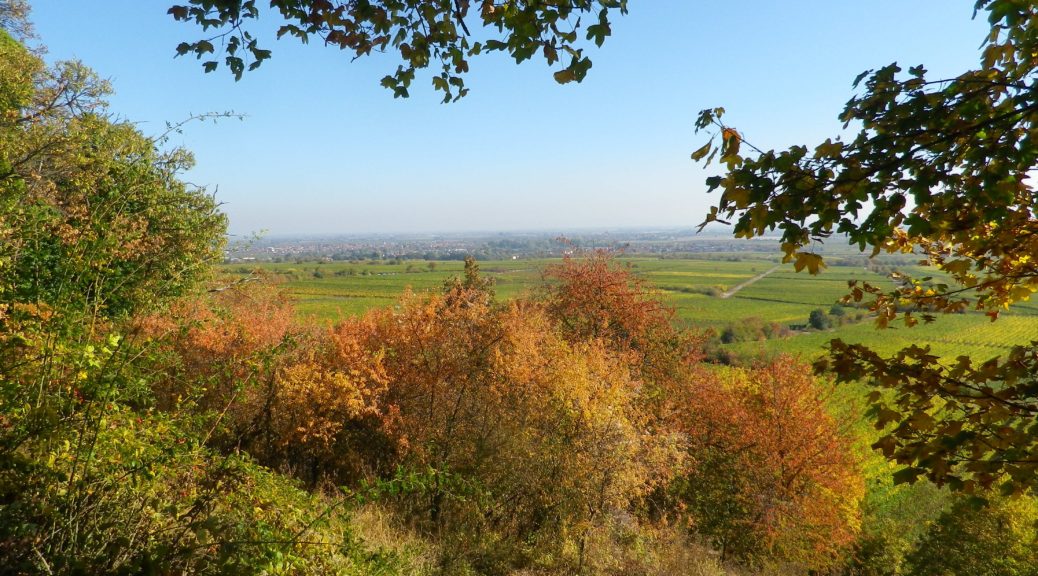The climbs were steep, but the views were very rewarding. With more time, I would have done more climbs. In fact, in my castle hiking days, I had already hiked to several highpoints and castles on this trail: the Neuleiningen, the Wachtenburg, Hambacher Schloss, the Kalmit lookout, and that is just in the Mittelhaardt district. But at 185 kilometers, I didn’t have enough vacation days left! So perhaps on some other trip to Germany, I will be able to complete the Pfaelzer Weinsteig Trail.
For hikers looking for an intimate experience of the Pfalz wine region, this trail covers much of the region, as does the Wanderweg (Hiking Trail) Deutsche Weinstrasse (see the Nutshells here and here). The similarities between the two is that each pass through famous wine towns and villages, where there are countless opportunities to sample the wines and visit wineries. They both also cover a variety of landscapes from urban, to vineyard to forest. The big difference is the level of difficulty. The Wanderweg Deutsche Weinstrasse is rather easy, with only a few steep climbs into woodlands. On the other hand, the Pfaelzer Weinsteig climbs from the villages, often located at the base of the hills, far into the hills of the Pfalzer Wald forest. In that sense, the trail is physically more challenging, and more diverse.
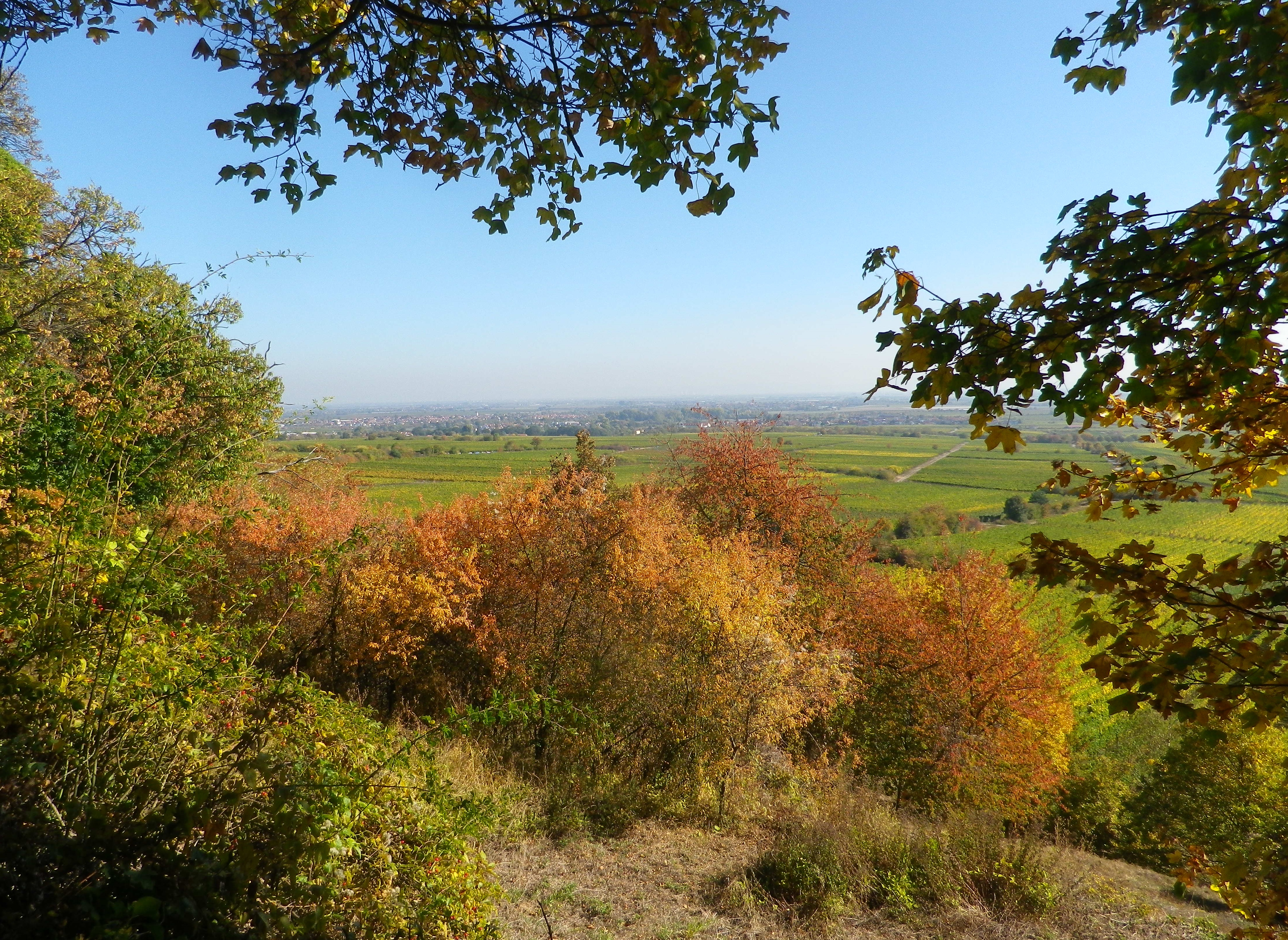
During my days hiking the Wanderweg Deutsche Weinstrasse, I often hiked along sections of the Pfaelzer Weinsteig. I wanted to try at least one complete stage of the Pfaelzer Weinsteig. I combined (and timed) hiking that stage with two other specific bucket list items I wanted to experience on that trip: a longer visit to Deidesheim, and to see the parade celebrating the end of the German Wine Harvest Festival (Weinlesefest) in Neustadt an der Weinstrasse. Thus, I decided to hike Stage Four, from Deidesheim to Neustadt on the day of the parade.
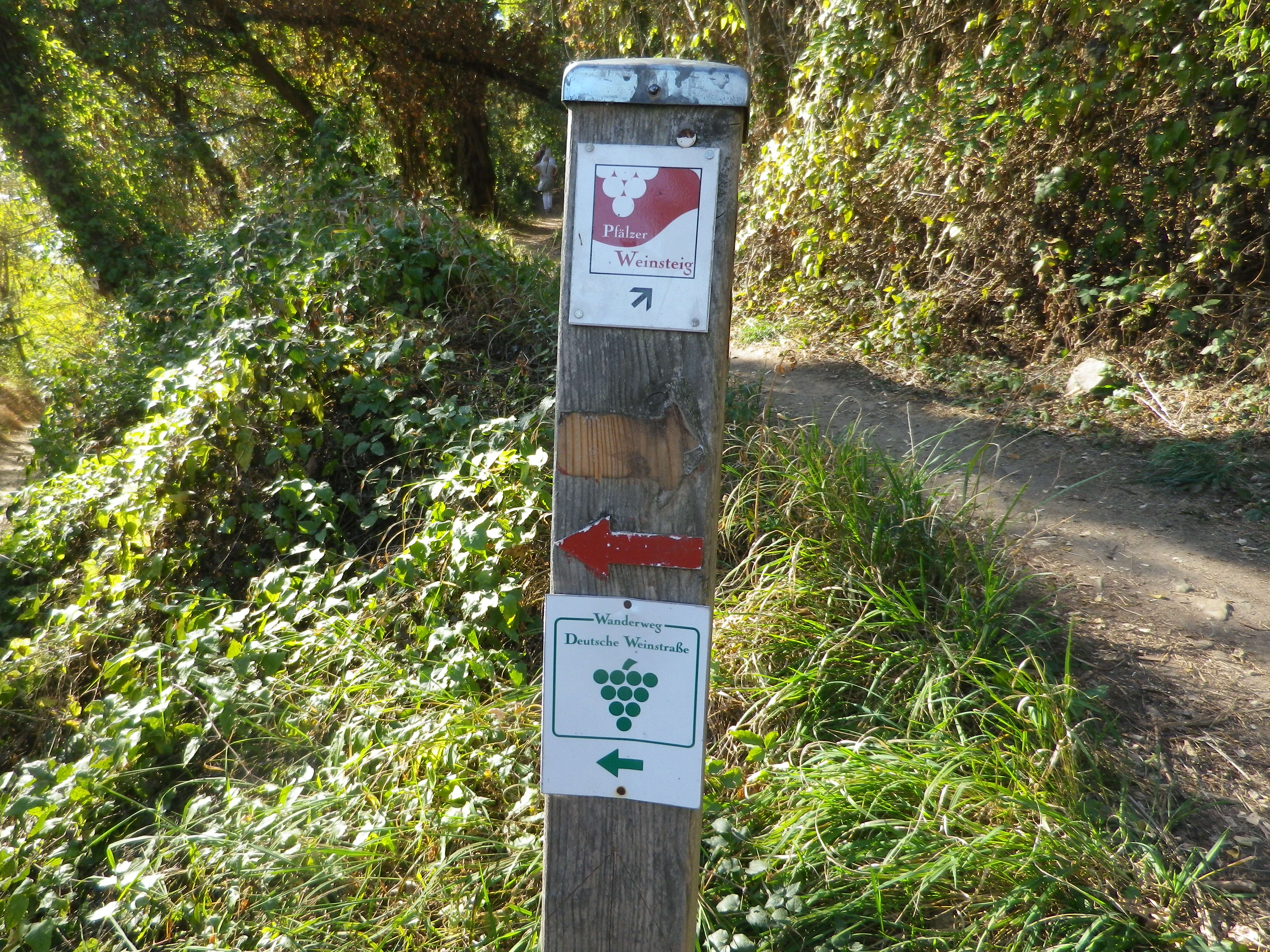
Word of advice: Between the largest wine festival in the world, the Duerkheimer Wurstmarkt in nearby Bad Duerkheim, in the middle of September, and the second largest wine festival in the world, the Weinlesefest in Neustadt a two-week festival ending on the second Sunday of October, the tourist facilities and parking areas in this district are stretched to capacity. Not being able to leave my car in the hotel parking lot,* I had to find an empty public parking spot, which took me over an hour. That, combined with my later than anticipated start, meant that unfortunately I would have to cut my hike short. Fortunately, the area is served by frequent commuter rail service. So, with a quick look at the route, and an eye on my watch, I headed for the hills.
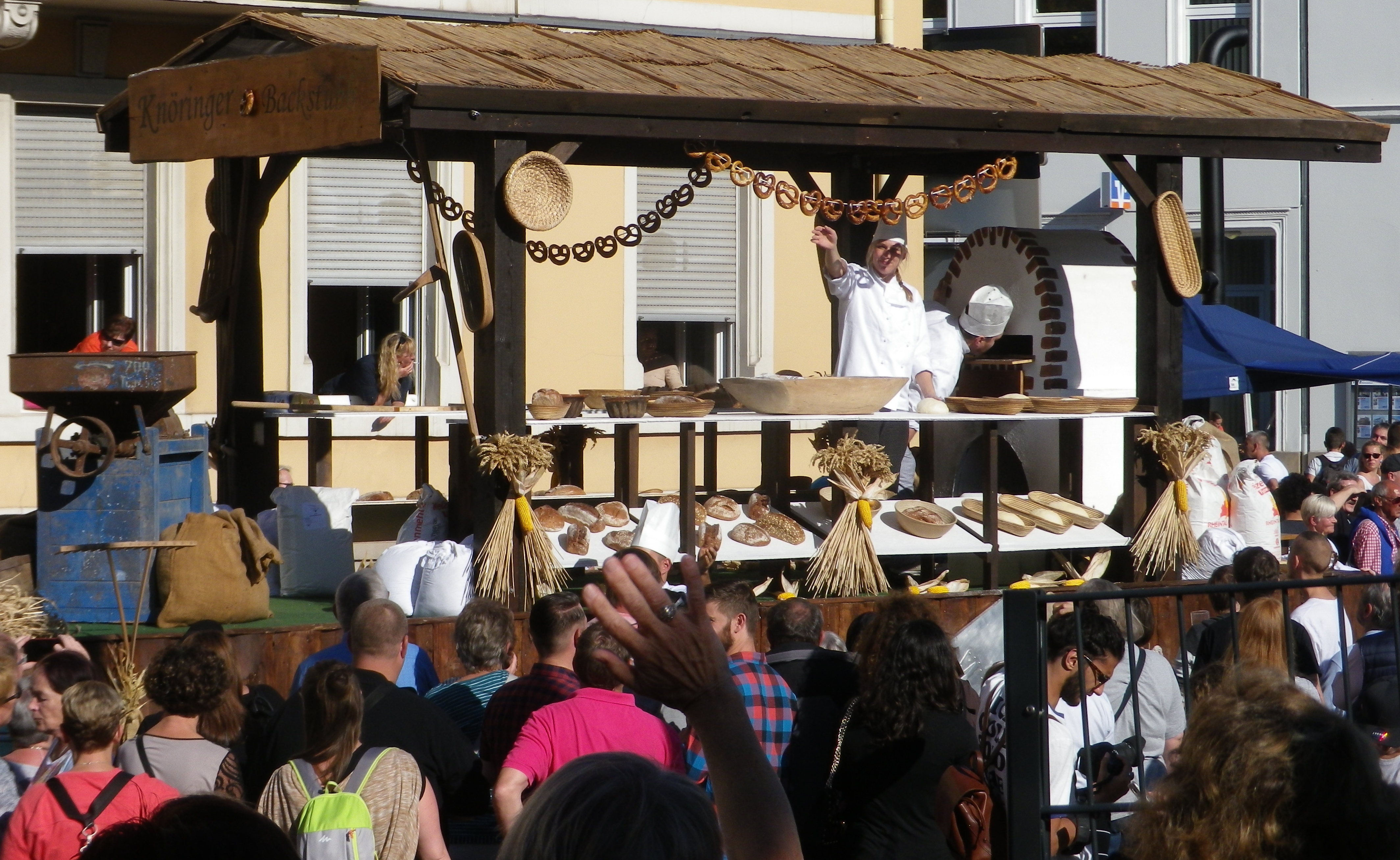
As I wandered through the heart of Deidesheim again (my parking place was way out of town), I took more photos of this very picturesque village. It has become a very popular place, from five-star hotels to bed and breakfast rooms, Michelin-starred restaurants, to local pubs serving fresh, local cuisine. Everywhere, great wines are on offer. I definitely recommend a stop at Deidesheim.
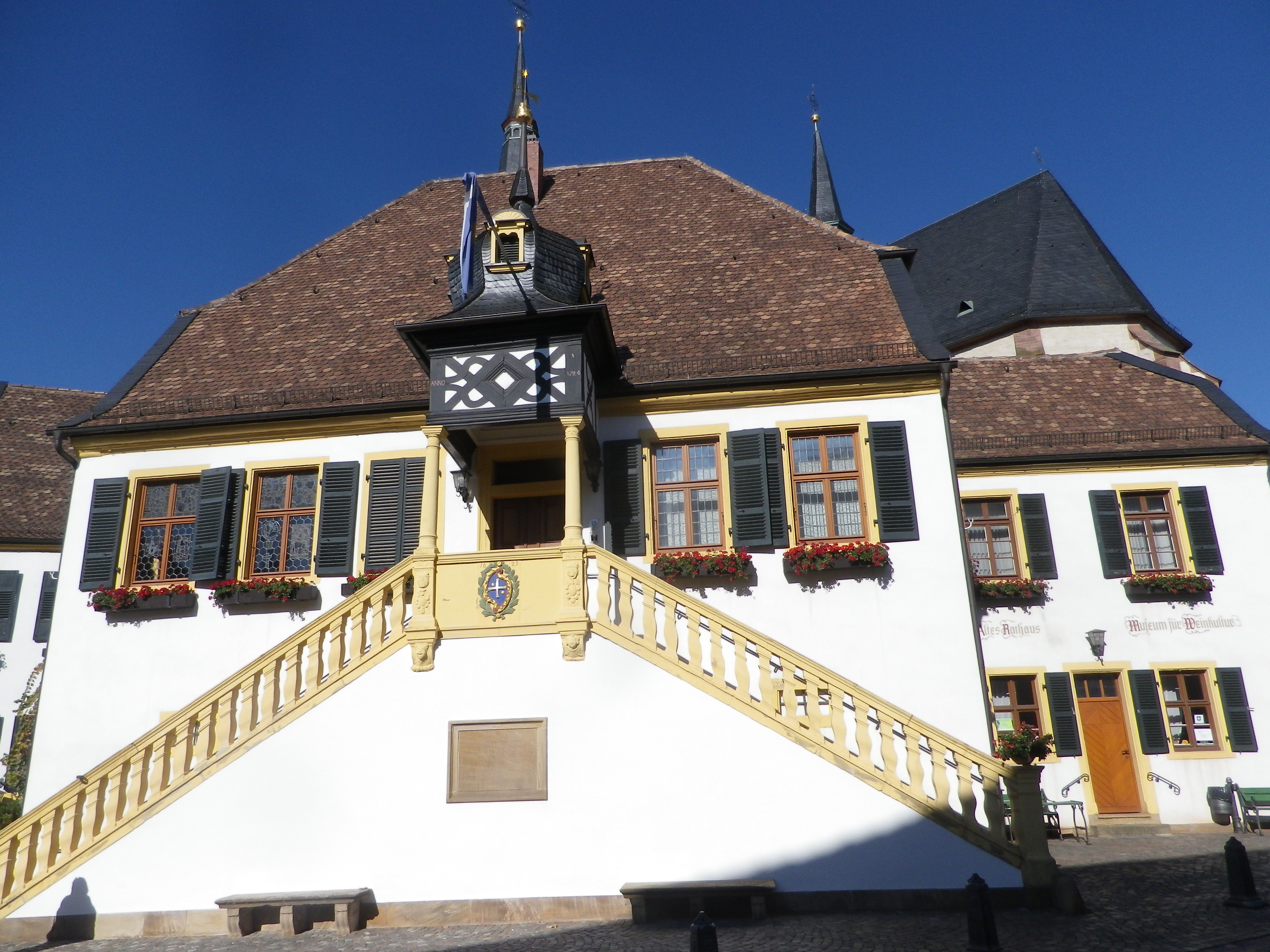
The hike through the village ended in the vineyards, which are often named, and continued into the woods. The Pfaelzer Wald is one of Germany’s larger, continuous forests, which actually joins the French Forest of the Vosges du Nord, for days and days of forest hiking. However, even in the forest, man’s hand can be seen. Stone escarpments were often quarried. Chapels, even cloisters, dot the sylvan landscapes. Long deserted now, albeit sometimes lovingly maintained, they are romantic expressions of local devotion to the history of the landscape.
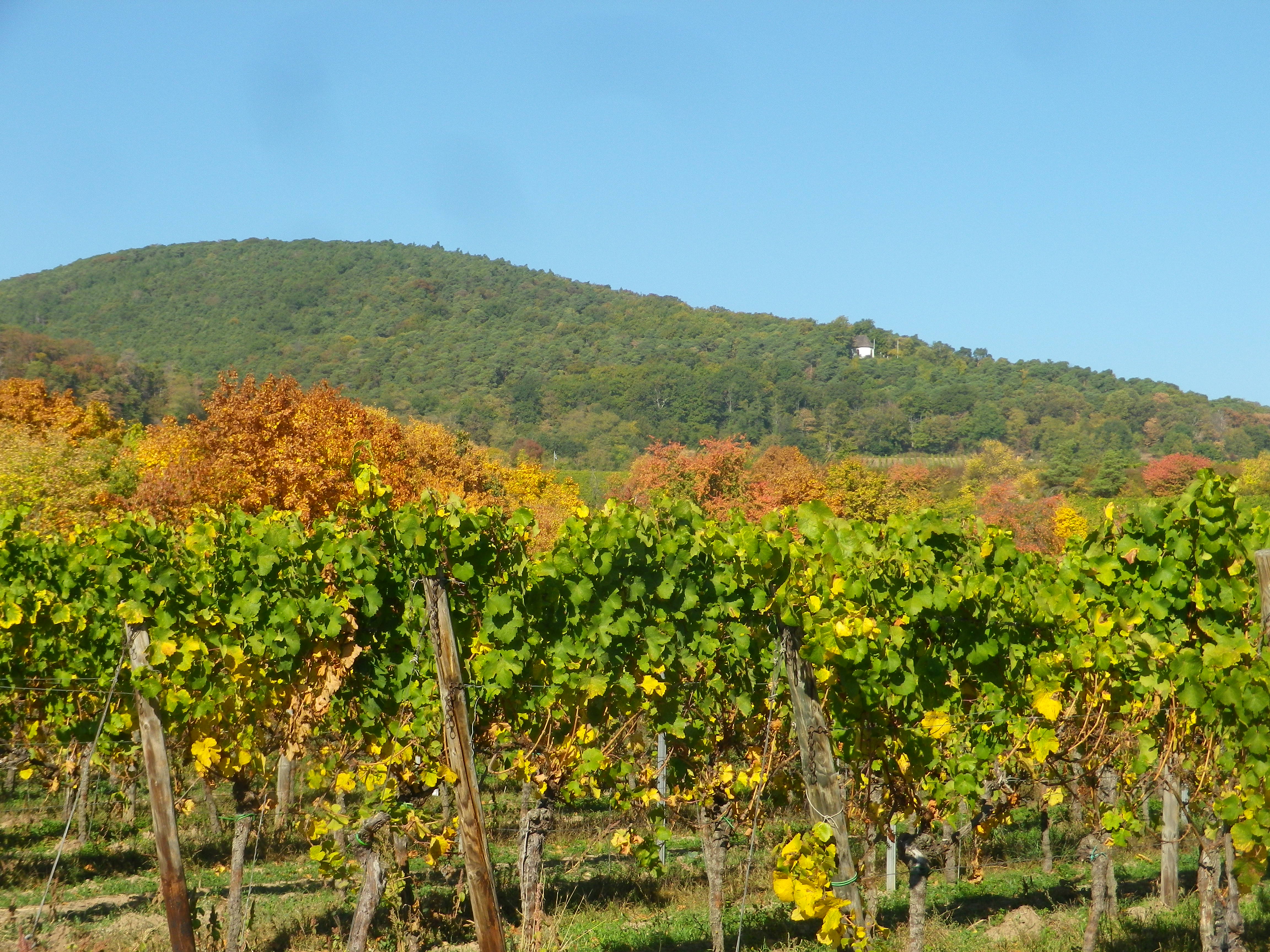
The trail dipped down into the hamlet of Koenigsbach an der Weinstrasse, then headed back up into the forest. Gimmeldingen was next, then a steep climb high into the Pfaelzer Wald, before heading back down into Neustadt by its iconic Wolfsburg castle ruins, skipping most of the famous wine village of Haardt.
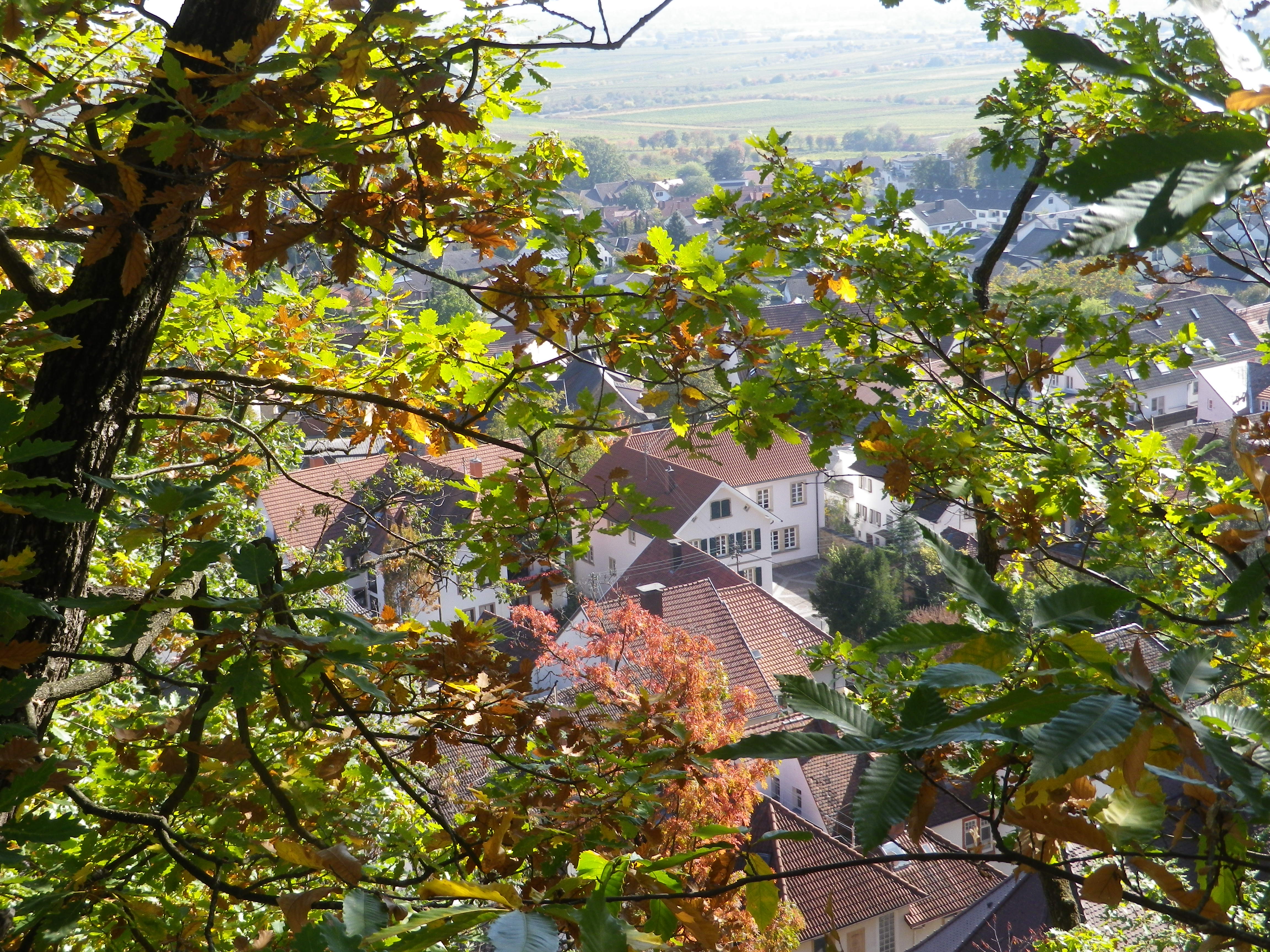
But I had to break off shortly after Gimmeldingen to catch the train, thereby missing one of my favorite pubs, the Forsthaus Benjental. My train arrived in Neustadt about twenty minutes before the parade began. I bought a glass of wine from one of the many vintner vendors in the main square, and took up a position overlooking the parade route so that I could take better photos. (People who line up at street-level often get a shot of wine as a vintner float passes by – providing they are forearmed with a glass.) The floats that came passing by 15 minutes later are decorated with wine themes, and represent a labor of love. From town bands (and just about every town in Germany has a town band that will travel to other towns to help celebrate festivals with foot-stomping music), to wineries, to local clubs, there is a tremendous amount of participation to help make these festival parades memorable. No doubt about it, the Weinlesefest is memorable, and should be seen at least once in a lifetime! The same can be said of the Pfaelzer Weinsteig, or the Wanderweg Deutsche Weinstrasse! So many wine experiences to do, and so little time…
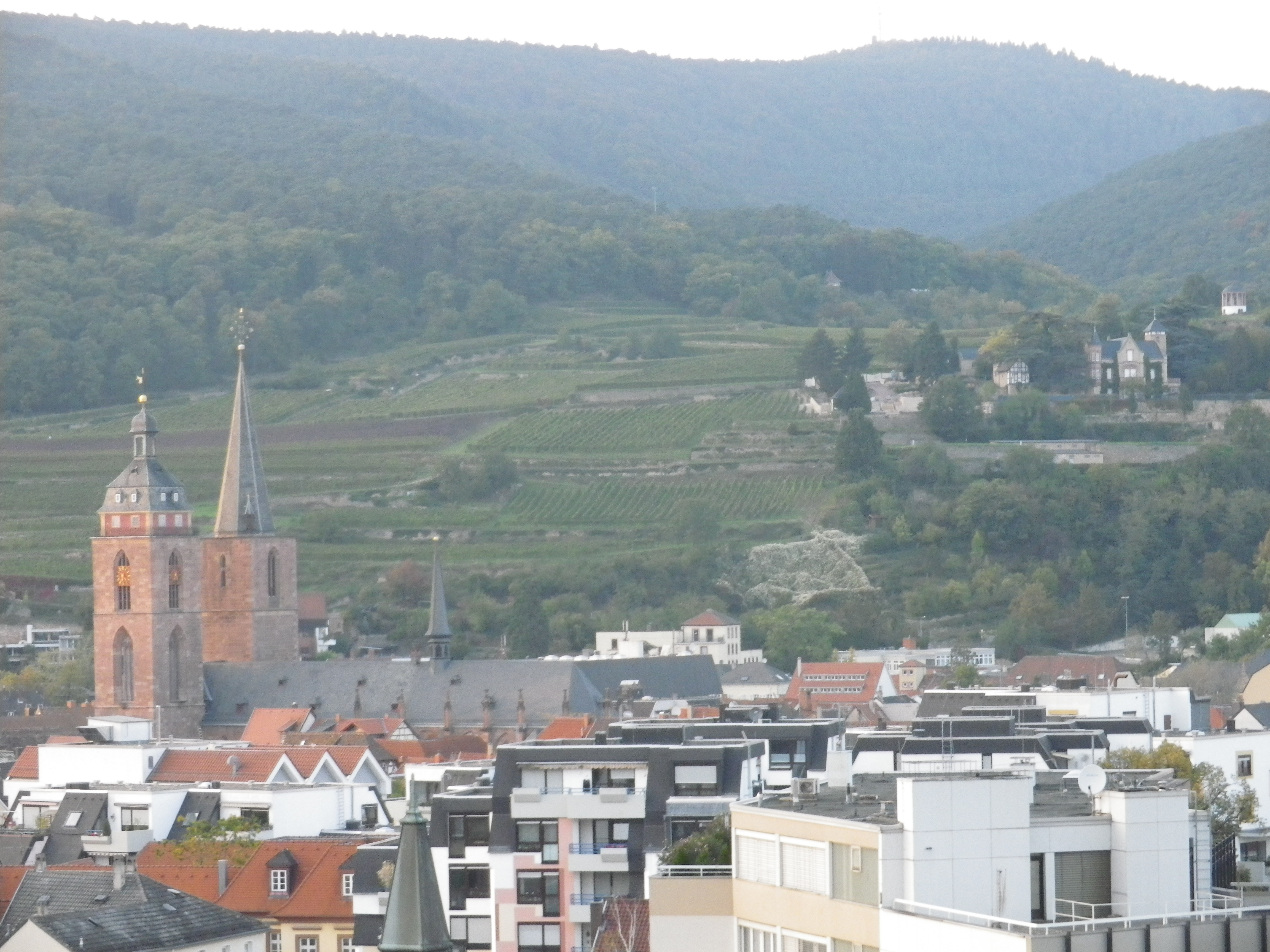
*Excepting peak seasons/weekends, hostellers will sometimes allow guests who have checked out to leave their cars in the hotel parking lot for a morning hike. The expectation is that the cars will be gone by no later than check-in time for incoming guests to park.
